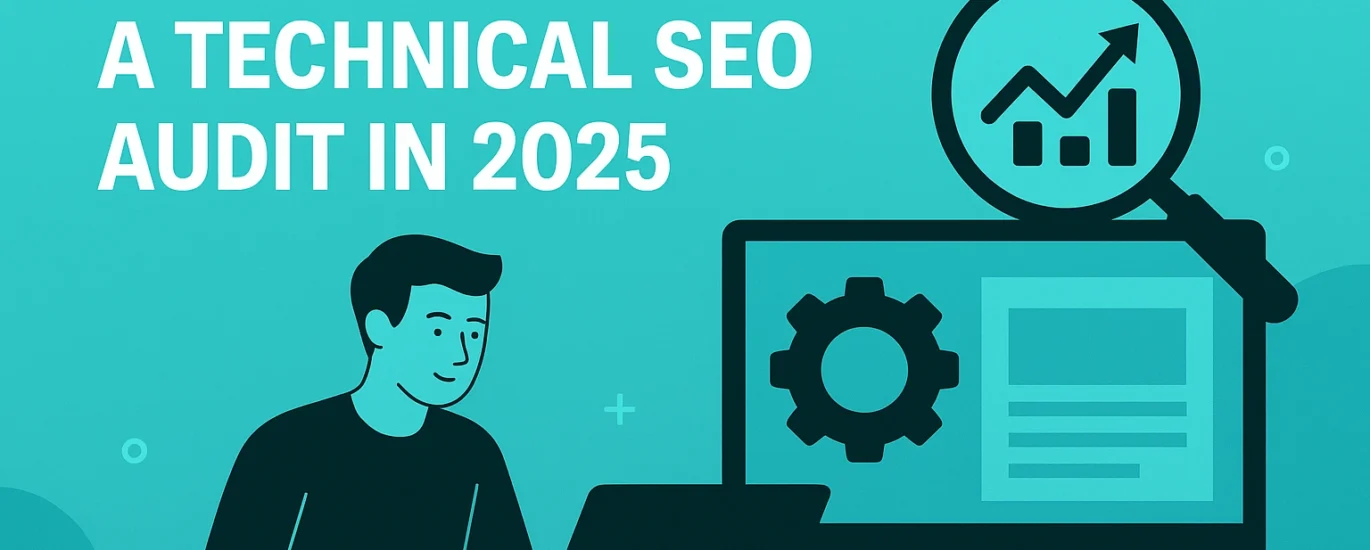In the ever-evolving world of digital marketing, a technical SEO audit is your roadmap to better rankings, higher traffic, and stronger site performance. With Google’s 2025 algorithm focusing more on user experience, mobile-first indexing, and Core Web Vitals, it’s essential to audit your site with updated strategies.
Whether you’re an in-house marketer, a freelancer, or an SEO company in Ahmedabad, mastering the art of technical SEO audits will keep your websites running at peak performance.
What is a Technical SEO Audit?
A technical SEO audit is the process of evaluating the technical aspects of a website to ensure that it meets search engine requirements for crawling, indexing, and ranking. Unlike content audits, this focuses on:
- Site structure
- Page speed
- Mobile usability
- Indexing
- Structured data
- Core Web Vitals
In 2025, technical SEO has become a foundation rather than an afterthought for ranking success — something every SEO company in Ahmedabad should prioritize.
Step-by-Step Technical SEO Audit Guide (2025 Edition)
Step 1: Crawl Your Website Like Googlebot
Start by simulating how search engines view your website using tools like:
- Screaming Frog SEO Spider
- Sitebulb
- Ahrefs Site Audit
- Semrush Site Audit Tool
This helps identify:
- Broken links
- Duplicate content
- Redirect chains
- Orphan pages
Pro Tip: Every SEO company in Ahmedabad should run scheduled crawls to stay ahead of errors.
Step 2: Check Indexing Status
Use Google Search Console to see how many of your pages are indexed. Navigate to:
Google Search Console → Pages → Indexed / Not Indexed
Common issues:
- Pages blocked by
robots.txt noindextags on key pages- Soft 404s
Make sure your XML sitemap is submitted and error-free.
Step 3: Evaluate Core Web Vitals
In 2025, Core Web Vitals directly affect rankings. The three key metrics are:
- LCP (Largest Contentful Paint) – Should be under 2.5s
- FID (First Input Delay) – Should be under 100ms
- CLS (Cumulative Layout Shift) – Should be under 0.1
Use PageSpeed Insights, Lighthouse, or Web.dev to get real-time vitals.
Trusted SEO companies in Ahmedabad are now offering Core Web Vitals optimization as a standalone service.
Step 4: Mobile-First Optimization
With mobile-first indexing now universal, Google ranks your website based on the mobile version.
Checklist:
- Responsive design
- Clickable elements spaced properly
- Font size > 16px
- No horizontal scrolling
If you’re an SEO company in Ahmedabad, mobile testing should be standard in your audits.
Step 5: Inspect Your Robots.txt & Sitemap
- Ensure robots.txt isn’t blocking essential URLs.
- Ensure your sitemap.xml is up to date and submitted to Search Console.
- Validate both files at:
yoursite.com/robots.txtyoursite.com/sitemap.xml
Step 6: Fix Broken Links (Internal & External)
Broken links frustrate users and hurt SEO.
Tools to find them:
- Ahrefs → Broken Links
- Screaming Frog → Response Code = 404
- Broken Link Checker plugin (for WordPress)
A reliable SEO company in Ahmedabad knows this step boosts both user experience and crawlability.
Step 7: Check Structured Data (Schema Markup)
In 2025, rich results make your site stand out in SERPs. Use Google’s Rich Results Test to check:
- Product schema
- Article schema
- FAQ schema
- Review schema
Structured data is a powerful tool that every advanced SEO company in Ahmedabad should implement.
Step 8: Analyze Site Speed & Hosting
Hosting affects load speed, which in turn affects rankings and conversions. Aim for:
- Load time < 2.5s
- TTFB < 200ms
- CDN usage (e.g., Cloudflare, Bunny.net)
Tools: GTmetrix, Pingdom, WebPageTest
A fast site reflects the technical skill of any professional SEO company in Ahmedabad.
Step 9: Check Canonicalization
Canonical tags prevent duplicate content issues. Each page should either:
- Canonicalize to itself
- Or reference the correct canonical version (especially in eCommerce filters)
Use Screaming Frog to scan for missing or incorrect canonicals.
Step 10: Audit Your HTTPS & Security Setup
All sites must be on HTTPS. Also check:
- SSL certificate is valid
- HTTP to HTTPS redirection is working
- No mixed content issues
Security = Trust. And trust leads to rankings — something every expert SEO company in Ahmedabad understands.
Bonus Checklist: Must-Use Tools for 2025
| Tool | Purpose |
|---|---|
| Screaming Frog | Crawl your entire site |
| Ahrefs | Audit, backlinks, broken links |
| Google Search Console | Indexing & visibility |
| Semrush | Site health & keyword tracking |
| GTmetrix | Page speed testing |
| Web.dev | Core Web Vitals audit |
| Chrome DevTools | Inspect page elements |
How Often Should You Run a Technical Audit?
For most businesses:
- Run a full technical audit every 3 months
- Monitor critical metrics monthly
If you’re running an agency or are a growing SEO company in Ahmedabad, audit every client website monthly.
Final Thoughts
A technical SEO audit in 2025 isn’t just about checking boxes — it’s about optimizing your website to give users and search engines the best possible experience.
From crawlability to page speed, Core Web Vitals to mobile-friendliness, each element you audit strengthens your online presence.
Whether you’re doing it yourself or hiring a professional SEO company in Ahmedabad, don’t skip this critical step in your digital marketing strategy.






